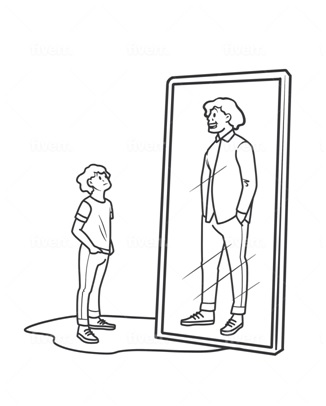A Coaching Model By Maria Stefansdottir, Executive Coach, ICELAND
The Ideas and Tools of Positive Psychology HAPPY Model
If you plan on being anything less than you are capable of being, you will probably be unhappy all the days of your life. Abraham Maslow
I’ve worked as a leader for 20+ years and have always found the most joy in my work when mentoring young people and guiding them to envision their endless possibilities and find their voice. People are often unsure of what they want to become and which road to take at that point in life. My passion is to help people envision their future by imagining things they want, thinking of the unimaginable, and allowing them to see that everything is possible with the right mindset. I have been coached for the past four years and moved forward in ways I never saw coming before. It makes me a firm believer in coaching and how it moves people from one place to another. I believe in simplicity, and my model mirrors that, simple but powerful.
I named my coaching model “HAPPY”. The model rests on the ideas and tools of positive psychology. It aims to help people live meaningful life, use their skills, and live up to their potential. The model is designed to help clients envision “their future self,” the person they want to become, and which dreams they want to fulfill, not only as professionals but with a focus on general happiness in life. The photo on the front page shows a sad-looking person looking at her/his future self in the mirror as the person she/he wants to become.
When starting to work with a new client, the first session is designed to help the client see this person by asking questions that take the client into the future, an idea that originates from “The best possible future self-exercise.”The questions help the client think out of the box in a safe space with no limitations. During this initial session, hidden dreams surface, and possibly new goals are set for the future. When people are unsure of which direction to take in life, exercises like this can be beneficial and lead to unexpected discoveries. Different areas of life are explored, such as carrier, current, and future hobbies, relationships with family and friends, and surroundings at home and work, to name a few. Sometimes desires that were not said out loud before will surface. The client sees where they would like to grow, and which new skills are needed to make that happen. Helping the client envision a life without limitations creates magic and sets the ground for future sessions. The focus is on all the positive things that bring happiness and more meaning to life.
HAPPY Stands For:
Happy Place – the client envisions the “best possible future self” through a guided process at the beginning of the coaching relationship. How you want to be and live in the future. It’s essential to help the client go through this process without thinking about the limitations and blockers that could be there.
Awareness – the client becomes aware of what’s holding them back. Self-awareness of beliefs and emotions that no longer serve. Are there values that are not honored?
Possibilities – the client discovers endless possibilities when beliefs and emotions that don’t serve them are no longer relevant. Here the client realizes there is no turning back to old patterns; the view ahead is much more attractive than what they see in the rearview mirror.
Pursue – the client starts pursuing a new way of thinking and making changes to their life that didn’t seem possible. Quite often a challenging part since it’s often easier to go back towards old patterns and safety.
You – become the person you always wanted to be, doing the things you wanted to do.
Throughout the coaching relationship, their best future self is often revisited, sometimes to remind the client of a vision or a dream or even to make changes if the journey reveals unexpected possibilities that were not on the client’s mind before. It can also be necessary to repeat the exercise.
In any given moment, we have two options: to step forward into growth or back into safety. Growth must be chosen again and again; fear must be overcome again and again. (Maslow, 2021)
This quote that has its origins in Maslow’s work is, like the one in the beginning, very relevant for my coaching model and what it stands for. Happiness or not, most of us want to improve our lives in one way or the other. There is always room for improvement in some aspects of our life so why shouldn’t we fight for what we truly want and make the effort to make that happen.
Learn How to Create Your Own Coaching Model
Your Coaching Model reflects your values,
philosophies and beliefs and must communicate who you will coach
and the problems you will solve. Read more about creating your coaching model
References
Maslow, A. H. (2021, 11 1). Goodreads. Retrieved from Goodreads – Quotes
Maslow, A. H. (2021, 11 1). Goodreads. Retrieved from Goodreads – Quotes
